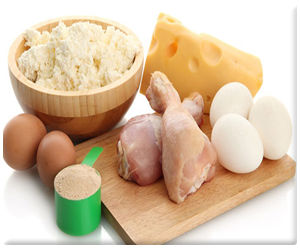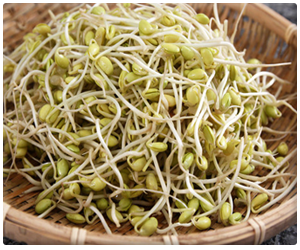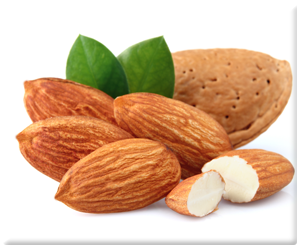PROTEIN
Protein is the main building block of our bodies. Protein is made up of very small units called amino acids. Proteins are the important constituents of tissues and cells of the body. They form the important component of muscle and other tissues and vital body fluids like blood. The proteins in the form of enzymes and hormones are concerned with a wide range of vital metabolic process in the body.
CLASSIFICATION
Depending on the chemical composition proteins are classified as given in Table.
Protein |
Characteristics |
Example or Occurrence |
Globular |
Albumins |
Soluble in water, dilute salt solutions, dilute acids, and bases. Coagulated by heat |
Lactalbumin, egg albumin, serum albumin |
Globulins |
Soluble in salt solutions, insoluble in water |
Serum albumin, arachin and conarchin of peanuts, myosin |
Histones |
Basic proteins. Soluble in most common solvents, fairly small molecules |
Nucleoprotein |
Fibrous (scleroproteins) |
Collagens |
Resistant to digestive enzymes; insoluble, converted to digestible proteins and gelatins on boiling; contain large amount of hydroxyproline; lack sulfur containing amino acids |
Skin, tendons, bones |
Elastins |
Partially resistant to digestive enzymes; contain little hydroxyproline |
Arteries, tendons, elastic tissues |
Keratin |
Highly insoluble and resistant to digestive enzymes; high cystine content |
Skin, hair, nails |
Protein – Conjugated Proteins |
Nucleoproteins |
Salts or basic protein or polypeptide and nucleic acids |
Chromosomes, nucleoli |
Mucoproteins |
Protein or small polypeptide containing mucopolysaccharide; hexosamine less than 4% |
Glycoid of serum alpha globulin; submaxillary and gastric mucoids |
Glycoproteins |
Protein or small polypeptide containing mucopolysaccharide; hexosamine less than 4% |
Serum alpha, beta, and gamma globulins |
Lipoproteins |
Complexes of protein and lipids having solubility properties of proteins |
Cell and organelle membranes |
Proteolipids |
Complexes of protein and lipids having solubility properties of lipids |
Myelin |
Chromoproteins |
Compounds consisting of proteins and a non-protein pigment |
Flavoproteins, haemoglobin cytochromes |
Metalloproteins |
Metals attached to protein; metals not part of a non-protein prosthetic group |
Ferritin, Hemosiderin,
Transferrin, Carbonic anhydrase |
Phosphoproteins |
Phosphoric acid joined in ester linkage to protein |
Casein of milk |
NUTRITIONAL CLASSIFICATION OF AMINO ACIDS
Essential amino acids
Essential amino acids are ones that cannot be synthesized by the body at a rate sufficient to meet the needs for growth and maintenance.
The human body has certain limited powers of converting one amino acid into another. This is achieved in the liver by the process of transamination, whereby an amino group is shifted from one molecule across to another under the influence of amino transferases, the co-enzyme of which is pyridoxal phosphate. Inability of synthesis the carbon skeleton of this amino acid is the probable reason why they are dietary essentials. 9 out 200 amino acids are classified as essential amino acids.
Non-essential amino acids
Non-essential amino acids are ones that the body can make in adequate amounts if nitrogen is available in the diet. They are nonessential only in the sense that they are not essential components of the diet.
Conditionally essential amino acids
These are needed in the diet unless abundant amounts of their precursors are available for their synthesis. The new born may not have enzymes in adequate amounts to synthesis nonessential amino acid. Or in intestinal metabolic dysfunction arginine may not be synthesized. Hence it becomes conditionally essential amino acid. Amino nitrogen is not freely interchanged between all amino acids. The precursors of conditionally essential amino acids are given in table
List of essential and non-essential amino acids
Essential amino acids |
Conditionally essentially amino acids |
Nonessential amino acids |
Histidine |
Arginine |
Alanine |
Isoleucine |
Cysteine |
Asparagine |
Leucine |
Glycine |
Aspartic acid |
Lysine |
Proline |
Glutamic acid |
Methionine |
Tyrosine |
Glutamine |
Phenylalanine |
|
Serine |
Threonine |
|
|
Tryptophan |
|
|
Valine |
|
|
FUNCTIONS
- Proteins supply the body building material and make good the loss that occurs due to wear and tear.
- Proteins, as antibodies help the body to defend against infections.
- The dietary proteins are broken down into amino acids and absorbed as such and these amino acids derived from the dietary proteins are used by the body to synthesize the protein needed by the body for various functions like tissue building, replacement of protein depleted and synthesis functional molecules like enzymes, hormones and antibodies.
- 1g of protein gives rise to 4.2 kcal.
- The diet should contain adequate carbohydrate and fat to provide energy so that the proteins energy so that the proteins in the diet are most economically used for the formation of body proteins to fulfill other functions essential to life.
REQUIREMENT
Proteins are required for maintenance in adults, for growth in infants and children, for foetal development in pregnancy and milk output during lactation. Children require more protein per unit body weight than do adults, because of new tissues which are being laid down during growth are largely built from amino acids drawn from the dietary proteins.
- Animal proteins are of higher quality since they provide essential amino acids in right proportions.
- Even vegetarians can get enough protein by eating combination of cereals, millets, nuts and pulses.
- Milk and egg contain good quality protein.
- Some of the rich sources of protein are pulses, legumes, nuts and oilseed, milk and milk products, meat, fish and poultry.
- Among the plant foods soybean is the richest source of protein containing over 40% of protein.
- The amount of protein required for boys (16-18 yrs) weighing 57 kg weight is 78g per day, whereas same age group girls weighing 50 kg need 63g/ day.
- Pregnant women need 65 g of protein, while lactating women (up to 6 months) need 75g/day
SOURCES
- Foods contain a high amount of protein and are classified as protein rich foods.
- Examples of such foods are animal foods like meat, fish and egg and plant foods like pulses, oil seeds and nuts.
- The best source of animal protein for growing children is milk. Milk also provides a good amount of calcium which is normally lacking in vegetarian diets.
- Eggs also can be used as a source of good quality protein whenever possible. Skimmed milk is a rich source of protein as whole milk.
- Butter milk of good quality can also serve as a source of good quality protein.
- Fish also is a good source of protein.
- Soya bean is the richest source containing over 40% of protein.
- Defatted oil seed cakes which contain 50-60% protein are rich source of protein.
Protein content of foods
Animal sources |
Protein g/100g |
Plant Sources |
Protein g/100g |
Skimmed milk powder (Cow’s milk) |
38 |
Soya bean |
43 |
Whole milk powder (Cow’s milk) |
26 |
Watermelon seeds |
34 |
Fowl |
26 |
Wheat germ |
29 |
Cheese |
24 |
Groundnut |
26 |
Herring, India |
20 |
Green gram dhal |
25 |
Liver Goat |
20 |
Peas, dry |
20 |
Prawn |
19 |
Bengal gram whole |
17 |
Mutton |
18 |
Wheat whole |
12 |
Egg, Hen |
13 |
Agathi |
8 |
Milk Buffalo’s |
4 |
Rice |
7 |
Source
Vijayapushpam et al. 2008, Protein: Its importance. NIN, Hyderabad.
http://www.indiamart.com/kunjapurienterprises/pcat-gifs/products-small/pulses.jpg
Pike Ruth L and Myrtie L. Brown, 1975, Nutrition-an integrated approach, John Wiley and Sons, Inc., New York. |



